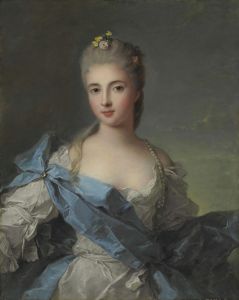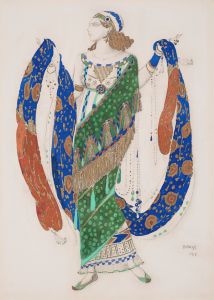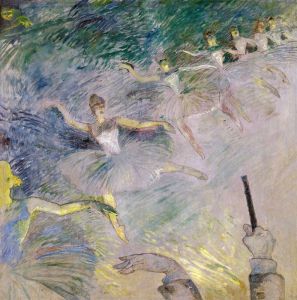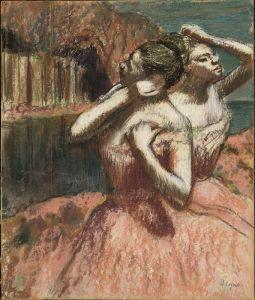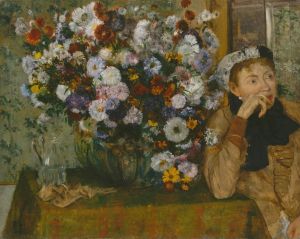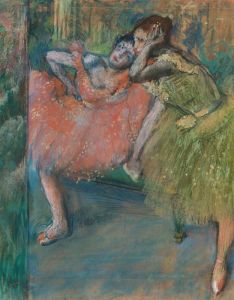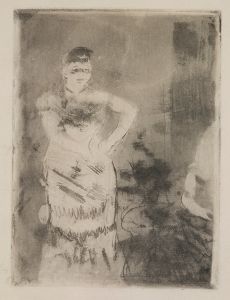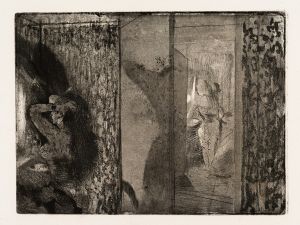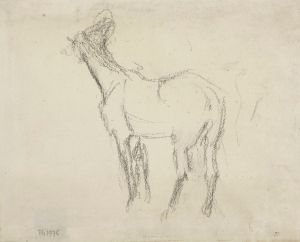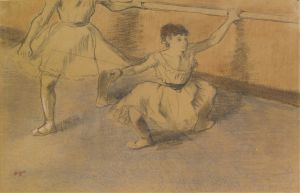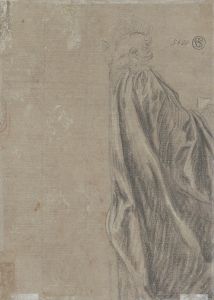
Cheval
A hand-painted replica of Edgar Degas’s masterpiece Cheval, meticulously crafted by professional artists to capture the true essence of the original. Each piece is created with museum-quality canvas and rare mineral pigments, carefully painted by experienced artists with delicate brushstrokes and rich, layered colors to perfectly recreate the texture of the original artwork. Unlike machine-printed reproductions, this hand-painted version brings the painting to life, infused with the artist’s emotions and skill in every stroke. Whether for personal collection or home decoration, it instantly elevates the artistic atmosphere of any space.
Edgar Degas, a prominent French artist associated with the Impressionist movement, is renowned for his works that capture the dynamism and grace of movement, particularly in ballet dancers and horses. One of his notable works focusing on equine subjects is "Cheval" (Horse), which exemplifies his keen interest in the anatomy and motion of horses.
Degas was born on July 19, 1834, in Paris, France, and he developed a passion for art at an early age. He studied at the École des Beaux-Arts in Paris and spent time in Italy, where he was influenced by the classical art of the Renaissance. Although Degas is often associated with Impressionism, he preferred to be called a realist, and his works often reflect a meticulous attention to detail and composition.
"Cheval" is part of Degas's broader exploration of equestrian themes, which he pursued throughout his career. His fascination with horses is evident in numerous paintings, drawings, and sculptures. Degas was particularly interested in the movement of horses, and he often visited racetracks to observe and sketch them in action. This interest was likely influenced by the advent of photography and motion studies by contemporaries like Eadweard Muybridge, whose work captured the sequential movement of animals.
In "Cheval," Degas employs his characteristic style, which combines a strong sense of line with a delicate use of color and light. The painting captures the elegance and power of the horse, emphasizing its muscular form and the fluidity of its motion. Degas's technique often involved layering pastels over a monotype, which allowed him to achieve a rich texture and depth in his work.
Degas's equestrian works, including "Cheval," are notable for their composition and perspective. He often depicted horses from unconventional angles, capturing the energy and tension of their movement. This approach set him apart from many of his contemporaries and contributed to his reputation as a master of depicting movement.
Throughout his career, Degas's work evolved, and he experimented with various media, including oil paints, pastels, and sculpture. His equestrian subjects, however, remained a constant theme, reflecting his enduring fascination with the beauty and dynamism of horses.
Degas passed away on September 27, 1917, in Paris, leaving behind a legacy of innovative and influential works. His contributions to art, particularly his ability to capture movement and his unique approach to composition, continue to be celebrated and studied by art enthusiasts and scholars worldwide.
"Cheval" remains a testament to Degas's skill and his deep appreciation for the natural world, particularly the grace and strength of horses. His works are housed in major museums and collections around the world, where they continue to inspire and captivate audiences.





